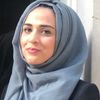
As someone who lives close to Grenfell and was there to see the fallout from the fire, I was sickened as I watched the film of a cardboard model of the tower being set alight by a laughing crowd.
To some the film may seem like just a harmlessly crass viral video but this is exactly how hate spreads and, for someone who witnessed the tragedy, it’s heart-breaking to see this sort of offensive gimmick at the expense of other people’s lives.
After the original blaze had wreaked its havoc I went down to the area to offer my support to the victims. I observed first-hand the devastation which the disaster caused to many of the people whom this video has ridiculed.
Amongst many scenes, I saw a young Muslim woman who was searching for her fiancée who had been lost in the blaze. She was understandably frantic and asking anyone if they had seen him or had any more information.
When I saw the cardboard effigy complete with ‘brownface’ figures including those wearing a hijab, I had to wonder how the woman I met would feel to see her personal heartbreak mocked in such a cruel and public way.
Had the men involved with the effigy seen her tears and turmoil in the aftermath, could they have stomached going as far as they did? I doubt it.
The film does not reflect what the London I know is about, it’s a revolting aberration that doesn’t reflect the solidarity and care for one another that this country and its communities stand for.
In the aftermath of the fire I saw people put aside labels to come together to support the victims and one another at St Clement’s church and other places of faith.
I watched people of all skin colours, faiths and no faiths comfort people, including the lady who stood sobbing and staring up at the blackened building where the smoke residue was still present. Her grief was so great that it was hard to know what to say to her but I and others were we able to be there to share food, supplies and solidarity.
Towards the end of the first day following the crisis, Christians, Muslims, Jews, Sikhs and Atheists came together at a service held for the victims, families and those supporting. It didn’t matter what the colour of your skin was or what you believed, everyone just wanted to be together in a time of crisis.
It wasn’t just those there on the ground that showed us what London is made of either. The general public at large donated so many items to the victims that after a few days the relief effort had to call on them to stop. When I went to a nearby corner shop to buy body wash a day after the blaze as a donation, they were completely out of stock, such was the influx of support from local people wanting to lend a hand.
The actions of these people are and should be the norm in this city, not the ignorance displayed by those involved the creation of this film. At a time when it’s more important than ever that we come together as communities, things like this film divide and fuel negative sentiment on all sides. Today, more than ever, it’s critical that we don’t let the behaviour of the few detract from or undermine the goodwill of the many.
Aya Bdaiwi works for Faiths Forum for London, an organisation which empowers religious communities to work together towards a better London
